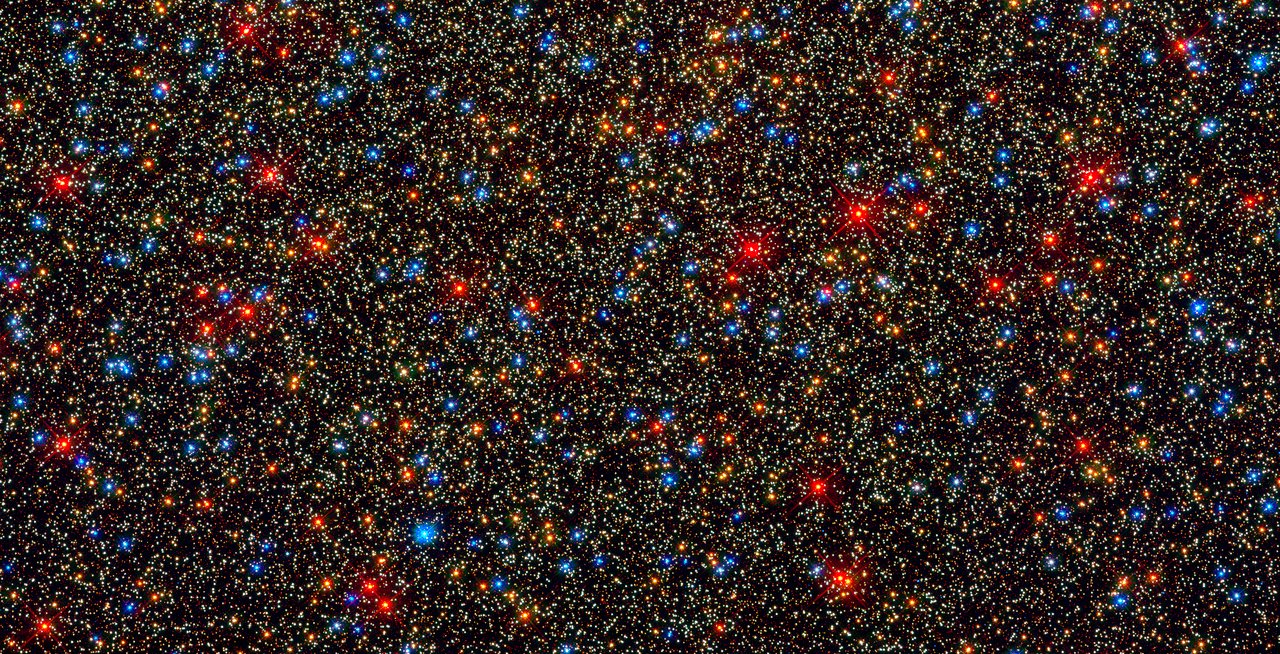Exoplanets: Space and ground telescopes to capture an accurate image.
(Star cluster of Omega Centuri, over a 100,000 stars)
Personally I believe we should transfer a bulk of Space exploration funding to space telescopes and/or robotic (unmanned) missions – to 'plant' optical viewing systems further into orbits on planets, small moons within our own solar system, rather than sending humans into space. My cynicism of the current space program stems from private and government investing to rev up to commercially buy and sell into an exclusive Space Race all the while our current rockets at this point are still using 50 year old technology. With the a feverish enthusiasm that is more attune to sending 'junk' into our upper atmospheres i.e an over inundation of communication satellites. While both Russian and China racing to send humans back to the moon, America seems transfixed on a manned mission to Mars. Yet, the pipe dream of costs is, as always, overlooked. Our world, financially, is in terrible shape, heavily indebted. Governments would have to borrow extreme amounts to reboot manned missions to the Moon, let alone Mars. We are living in a post bankrupted financial system. So, we may never return to the Moon anytime soon. Yet, technology and robots are cheaper and essentially will be more efficient than organic lifeforms. Space is a hostile environment for human beings. In fact, it remains completely adverse to all life beyond the Earths ionosphere.
One of the exciting discoveries of late has been the Kepler space telescope exoplanet finder, as it has now cataloged over 4000 planets which have orbits around stars similar to Earth, except the majority of the planets are either tidal locked (don't rotate like the Earth) with the atmospheres cooked off or orbit Red Dwarfs (smaller and cooler) stars with the environment would be super-cool. Both types of larger Earth like worlds (dense atmosphere) may not herald any type of life form. Although there are currently 54+ with 13 Exoplanets that may have the right environmental conditions; which include similar oval orbits around their host stars and suitable atmospheres for life. In a speculative sense, these so called 'Super Earths' found still may not hold the hallmarks for any type of life. This is where the newer Space telescopes will assist in detecting and imaging these Alien worlds.
From Earthsky
"The National Academies of Sciences, Engineering and Medicine (NASEM) in Washington, D.C., just released a new congressionally mandated report that aims to guide scientists’ study of exoplanets in the years to come. Among other things, the report urges NASA to lead a comprehensive direct imaging mission – using a new advanced space telescope – to study Earth-like exoplanets orbiting stars similar to our sun. The report is called Exoplanet Science Strategy.
The past several years have seen an explosion in the number of known exoplanets, or planets orbiting distant suns. At the moment, there are 3,779 confirmed planets, plus an additional 2,737 candidates awaiting verification. How many have been directly imaged? Fewer than two dozen, according to Wikipedia’s list of directly imaged exoplanets.
Many of the discovered exoplanets orbit close to their stars, and thus images are exceedingly difficult to image. Many are gas giants like Jupiter and Saturn, but others are smaller and rocky, like Earth. These rocky worlds would be the most difficult to image, but they’re of particular interest to astronomers and scientists, since at least some of them have the potential to be habitable and maybe even host life of some sort..."



Comments
Post a Comment